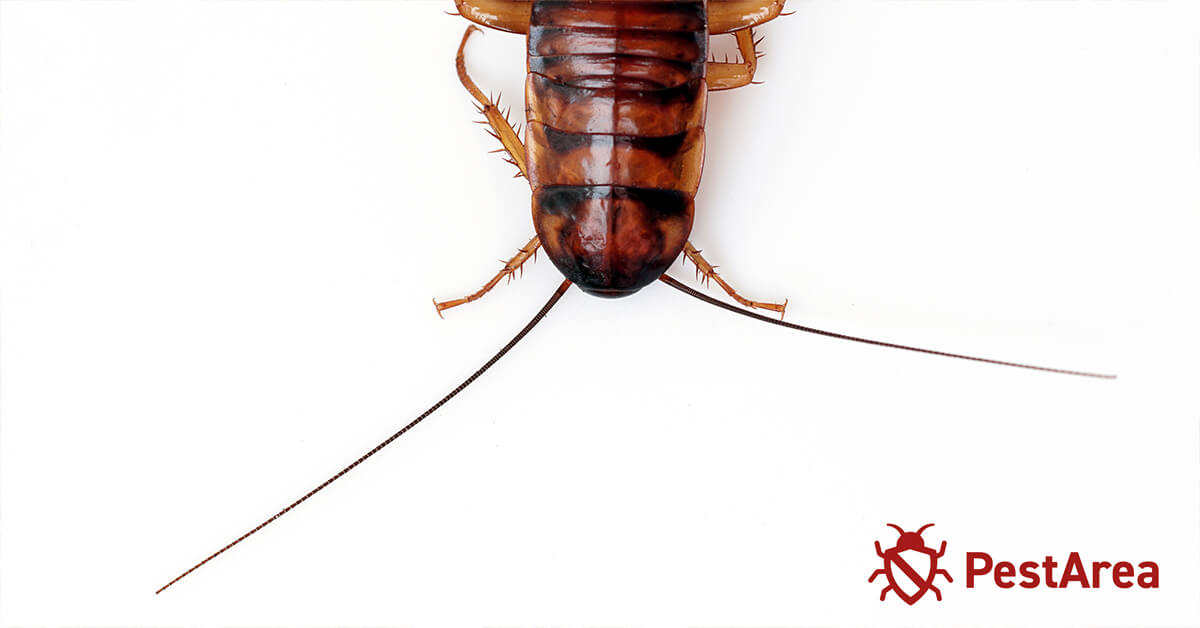
Cockroaches hide and reproduce in areas where you least expect them to be. While the kitchen and bathroom are common roach homes, these little pests can also attack your attic and rooftop.
Attics are usually dark and cold, serving as the best place for roaches to prevent human detection and reproduce. In addition, attics generally have small cracks, old insulation, rotten wood, and damaged roofs. These places provide the pathway for roaches to enter and hide.
You may have decided to eliminate these pests as soon as you saw the first roach popping out of your roof. But the question is, “how can you do that?” The best methods include trapping, detecting, using chemical sprays, and sanitizing the infested objects.
Do Roaches Like to Live in Attics?
Roaches don’t actually like to live in attics, but they can stay there for a long time. They usually prefer dark and cool places with ample food and water. So, if they find cracks near your attic, they will enter there and reproduce to take over other places in your home as soon as possible.
Some reasons why roaches live in attics include:
Attic Insulation
Insulation is essential to retain warm air in your home during cold weather. However, this may invite roaches in due to several reasons, such as:
- Sealed walls or tucked up ceilings
- The balanced temperature all year long
- Organic materials used in the insulation’s fibers, which are the perfect food source for roaches
If you’ve installed insulation in your attic, it’s better to replace it every 15 years to keep it safe from pest infestations. Otherwise, the roaches will feast on the insulation, along with cardboard and linen.
Favorable Conditions for Reproduction

Roaches are generally more active at night. Attics are primarily dark and cool, so roaches enjoy these conditions throughout the day. They stay hidden from humans and reproduce rapidly.
Texas A&M University states that roaches love high humidity places. Thus, a wet roof with warm air from the attic’s insulation serves as the ideal place for roaches to thrive and reproduce.
However, the roaches have to come out of the attic in the daytime, searching for food. If this happens, consider it a clear sign of infestation.
The Best Hiding Spot
Since roaches are nocturnal creatures, they tend to hide in places not accessible to humans and predators. We rarely go into our attics, and roaches take full advantage of it. They hide there in the daytime. They come out as soon as it’s nighttime without fear of getting caught.
Quietness
Attics are usually far away from the central part of the home, so the everyday noise doesn’t reach these places. This serves as the perfect conditions for the roaches to reproduce and build their nests. They are not getting disturbed or startled by humans, pets, or other predators.
How Do Cockroaches Get in the Attic?
Cockroaches enter your attic through:
- Poor weatherstripping on the roof
- Cracks in your walls or rooftops
- Gaps in caulking
When roaches get inside the attic, they choose the darkest, moist areas and nest there. They always watch out for food and water sources and eat almost anything organic.
Attics serve as roaches’ base camp. If they run out of food, they sneak out and raid different places of your home in search of something delicious.
How to Identify Roach Infestation in Your Attic?

Although you may feel disgusted by the roach’s first glance, this doesn’t indicate that your home is under attack. The chances are that one cockroach may have wandered into your home, but it is quite rare.
You can identify roach infestation in your attic by the presence of:
- Eggshells
- Nymphs
- Roach’s exoskeleton
- Cockroach poop
- Brown marks on your walls and floors
- Unexplained or sudden damage to goods, foods, and books
- Bad odor
If all of these things co-occur on multiple occasions, your attic is more likely infested by roaches. This is when you should take extermination steps and end their entire colonies before they spread everywhere in your home.
How to Get Rid of Cockroach Infestations in the Attic?
Roaches are a nuisance. No matter what elimination method you try, they will still pop out from anywhere, anytime. Thus, the best strategy to counteract these pests is implementing several treatment methods at once.
The Colorado State University suggests the following methods to get the roaches out of your attic:
Trapping and Sanitation
It’s not good to use an insecticide spray directly on the roaches’ nests. Instead, you need to spread a bigger trap to retain the existing roaches and keep the new ones out of your home during the entire operation.
Seal All the Entryways
The first step is to block all the entryways so that the roaches have no place to escape. This includes sealing the cracks in the roof, small holes and gaps in the walls and roofs, window spaces, and vents.
Trapping roaches wherever they are poses minimal damage as they can’t march further into your home. Moreover, they can neither eat your roof nor infest your expensive things.
To block the movement of roaches, you can follow these steps:
- Install an effective weather stripping
- Replace torn out weather stripping
- Caulk the cracks
- Seal plumbing that serves as pathways to other areas of your home
Light Up Your Attic
The University of Zürich found that cockroaches become lazy in well-lit areas, making it easier to catch and kill them. When you keep your home lit up all the time, cockroaches reduce their movements considerably. So, light up your attic to identify the infested areas.
Clean Affected Things
Roaches infest the things you store in your attic. So, clean all the boxes, furniture, or clothing in your attic and clean them with a piece of cloth. If you don’t have any other place to keep these things, you can still use the attic for storage purposes but remove the unnecessary items.
Roaches can easily chew through cardboard, but plastic is hard enough. So, you can place plastic containers in your attic to block their entry or exit.
Once done, don’t forget to wipe your clothes a few times as roaches’ eggs and larvae can stick to different things. Never put them with other clothes to wash later on; clean them right away.
Ventilation
The Journal of Economic Entomology found that cockroaches, mainly the American breed, deter from strong breezes with air velocities of more than 4.0 meters per second air velocities. If you have installed modern HVAC systems in your home, you can easily produce air velocity above this range. Try ventilating your attic to discourage the growth of cockroaches and prevent the new ones from entering.
Identification
After following all the above steps, the next step is to target the roaches directly. The best way to eliminate roaches and their nests is to apply the spray directly on them and their hiding spots. But if you don’t know where they are, how can you target them correctly?
That’s when the identification step helps you out. You can set traps or other cockroach-killer substances in high-traffic areas within your attic. This includes:
- Cabinets
- Plumbing area
- Damp places
- Dark areas
If you’re not getting enough cockroaches trapped with these baits, you need to change their places. When your bait no longer traps cockroaches, the infestation has wholly gone.
If traps don’t work for you, the chemical control method is another option for you.
Chemical Control
Roach killer insecticides are the most effective way to kill roaches. These chemicals come in various forms, including:
Residual Sprays
These leave a toxic residue on the places they are used on. However, these residues only stay for a limited time, and you’ll have to reuse the spray within the time mentioned on the bottle’s label.
You should be careful while using residual sprays. If mishandled, it can spread to other rooms of your home and cause allergies. Don’t:
- Spray in an excessive amount.
- Forget to block the escape routes of roaches.
- Keep the attic ventilated.
Remember that this spray consists of several poisons that can damage your belongings. So, always follow the directions written on the packaging.
Non-Residual Sprays
These sprays contain chemicals that convince cockroaches to come out of their hiding spots. However, non-residual sprays only kill a cockroach on direct contact. So, it’s better to use them with a residual spray.
The non-residual spray will lure the cockroach, and the residual spray will eradicate them.
If your home is infested with German cockroaches, you may face more challenges since this roach breed can resist insecticides. But that’s not the end; you can follow the next method to capture these cockroaches.
Baits and Dust
You can sprinkle dust in high-roach traffic areas and even the narrowest areas where sprays can’t access. Roaches carry the dust to their nests and kill the entire colony. Meanwhile, you can also use baits in those areas where you can’t use dust or sprays.
FAQs
Here are some commonly asked questions by homeowners frustrated with roach infestations:
How Do You Get Rid of Roaches in the Attic?
You can get rid of roaches in the attic by first blocking the entryways and trapping them. Then, light up your attic, clean your belongings, and ventilate the entire area. Once done, identify the roach nests and use insecticides and baits to kill them finally.
Do Cockroaches Live in Insulation?
Yes, cockroaches like to live in insulation as it ensures a balanced temperature all year long. Moreover, the organic materials used in the insulation’s fiber serve as the food source for the roaches.
How Do You Find a Cockroach Nest?
You can find a cockroach nest by setting traps or cockroach-killer substances in high-traffic areas within your attic. This includes cabinets, plumbing areas, damp places, and dark areas in your attic.
Conclusion
Cockroaches love to live in dark and cold areas, and the attic checks all these boxes. These pests don’t prefer to live in attics, but they consider these places base camps. Getting rid of roaches from the attic is essential before they start spreading to your entire home.
If any of the above home approaches don’t work for you, you can take help from a professional pest exterminator. They make the entire process easier and hassle-free.
